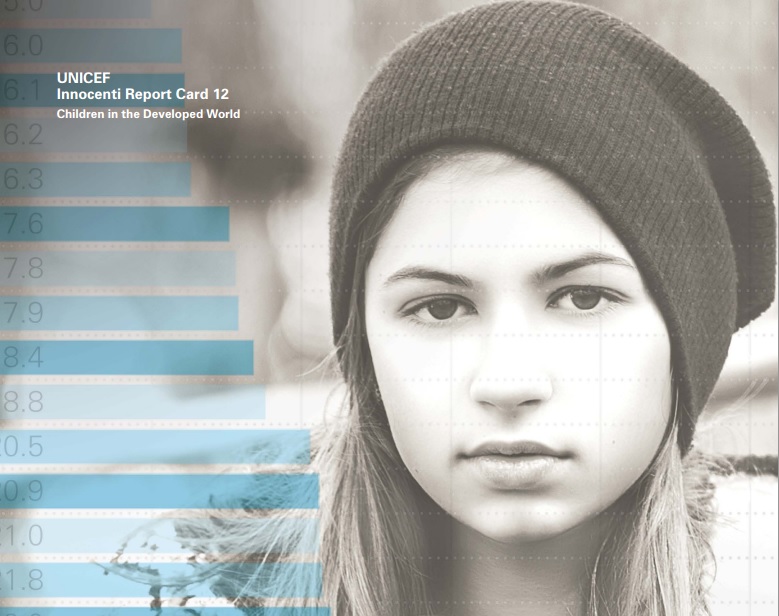Spain has lost a decade of advances in child protection
UNICEF -- In keeping with UNICEF's mandate to advocate for children in every country, the Centre's Report Card series focuses on the well-being of children in industrialized countries. Each Report Card includes a league table ranking the countries of the OECD according to their record on the subject under discussion. The Report Cards are designed to appeal to a wide audience while maintaining academic rigour. This report, the Innocenti Report Card 12, offers multiple and detailed perspectives on how the recession has affected children in the developed world. Official data have been used to rank the impact on children for countries in the European Union (EU) and/or the Organisation for Economic Co-operation and Development (OECD). For each country, the extent and character of the crisis’s impact on children has been shaped by the depth of the recession, pre-existing economic conditions, the strength of the social safety net and, most importantly, policy responses.
The Report Card presents a ranking of 41 OECD countries and the EU that shows whether child poverty has risen or otherwise. It also has a follow-up study regarding the proportion of 15 to 24 year olds who neither work nor study nor are in education (called Ni-Nis in Spain: Ni trabajan Ni estudian Ni reciben formación. More formally: la tasa NINI, or the NINI rate.)
UNICEF -- In keeping with UNICEF's mandate to advocate for children in every country, the Centre's Report Card series focuses on the well-being of children in industrialized countries. Each Report Card includes a league table ranking the countries of the OECD according to their record on the subject under discussion. The Report Cards are designed to appeal to a wide audience while maintaining academic rigour. This report, the Innocenti Report Card 12, offers multiple and detailed perspectives on how the recession has affected children in the developed world. Official data have been used to rank the impact on children for countries in the European Union (EU) and/or the Organisation for Economic Co-operation and Development (OECD). For each country, the extent and character of the crisis’s impact on children has been shaped by the depth of the recession, pre-existing economic conditions, the strength of the social safety net and, most importantly, policy responses.
The Report Card presents a ranking of 41 OECD countries and the EU that shows whether child poverty has risen or otherwise. It also has a follow-up study regarding the proportion of 15 to 24 year olds who neither work nor study nor are in education (called Ni-Nis in Spain: Ni trabajan Ni estudian Ni reciben formación. More formally: la tasa NINI, or the NINI rate.)
- In 23 of the 41 countries studied, child poverty has risen since 2008. In Ireland, Croatia, Latvia, Greece and Iceland, it has grown by over 50%.
- In Greece, in 2012, average income for families with children sunk to the levels of 1998, equivalent to a loss of 9 years of improvement. Using this same parameter, Ireland, Luxembourg, and Spain lost 10 years; Italy, Hungary and Portugal lost 8.
- The recession has hit the 15 to 24 age group harder than others, the NINI rate having increased dramatically in several countries. In the European Union, some 7.5 million in that age group were classified as NINIs in 2013 -- almost equivalent to the population of Switzerland.
- In the USA, where extreme child poverty has risen to levels above those of the recession of 1982, the measures taken for child protection has offered support to poor working families, but have been more effective among those living in extreme poverty and have no work. Child poverty has risen in 34 of the USA's 52 states since the present crisis began. 24.2 million children lived in poverty in 2012, a net increase of 1.7 million since 2008.
- Child poverty rates diminished in 18 countries, in some cases significantly. Australia, Chile, Finland, Norway, Poland and Slovakia managed to reduce their rates by 30%.

No comments:
Post a Comment
Thank you for taking the time to comment. Please make it as short as possible so we can deal with all of them. Your comment is subject to editing. Please do not use foul language. WE DO NOT USUALLY PUBLISH ANONYMOUS COMMENTS.